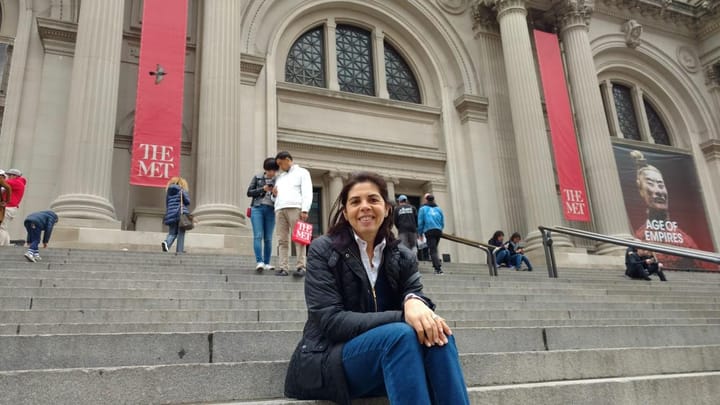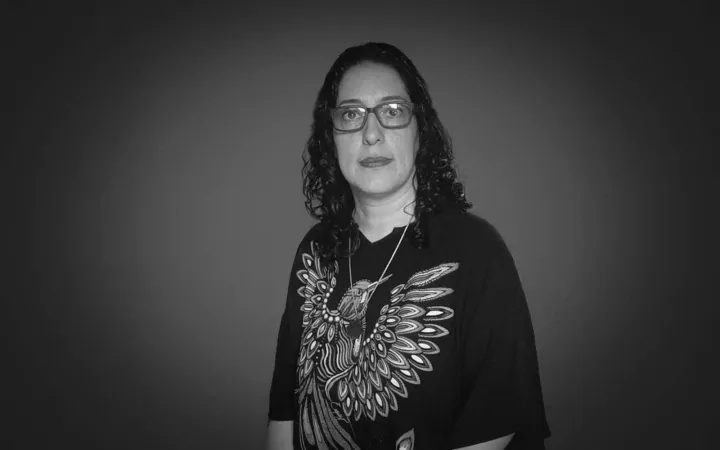
Por Dra. Anel Arellano Tejeda

Octubre fue decretado por la Organización Mundial de la Salud (OMS), como el mes de la sensibilización y concientización sobre el cáncer de mama y con el ánimo de utilizar la información como el arma que nos empodere a las mujeres con conocimiento sobre nuestro cuerpo, nuestra salud y nuestra felicidad, me permito compartir con ustedes estas líneas.
Existen decenas de tabúes alrededor del cáncer de mama, realidades distorsionadas por afirmaciones mal transmitidas de boca en boca, mentiras que de tanto ser repetidas se guardan en el subconsciente colectivo como verdades absolutas dañinas y peligrosas, aseveraciones irresponsables de programas de divulgación de poca monta y tristemente, duele decirlo como médico, pero también existen las irresponsables opiniones del mismo personal sanitario con conocimientos arcaicos, negados a actualizarse.
Arrastramos el daño colateral de muchos siglos de desconocimiento del cuerpo de la mujer, de los estigmas que envuelven nuestra sexualidad, de considerar que es pecado tocarnos, explorarnos, conocernos y hasta disfrutarnos, ser mujer es impúdico, que te mire alguien más que tu marido no es de señoras respetables. Por otro lado se suma la desigualdad social, ese muro tan tangible como injusto construido de interminables columnas de ladrillos de pobreza, marginación, discriminación y violencia, donde el que tiene puede y la relación entre la satisfacción de las necesidades es directamente proporcional a los recursos económicos que posees. Agreguemos a esto el temor a saber (bendita ignorancia que nos mantiene serenas pues desconocer permite seguir con nuestra vida normal), mientras no sea absolutamente evidente que algo anda mal, preferimos estar anestesiadas en la realidad que nos queremos fabricar, por qué cuando te decides realmente a saber, probablemente no te guste nada lo que vas a escuchar.
Así que todo esto y lo que se acumule deriva en los siguientes 10 puntos, que ni son los únicos, ni probablemente los más importantes, pero para empezar a adentrarnos a lo que cómo mujeres debemos obligatoriamente saber sobre nuestros senos, creo que por ahora son más que suficientes. Bien; pues que la curiosidad las embargue y decidan seguir conociendo sobre este y todos los temas que involucren saber sobre su cuerpo, desde cómo amarlo de forma orgánica, es decir tangible, real, mantenerlo sano y salvo, por dentro y por fuera, pero, sobre todo, que la sororidad les alcance para que a cada mujer que tengan en sus vidas, les hagan llegar la información que, no lo sabemos, probablemente le salve la vida.
El PRIMER PUNTO toca una dolorosa verdad, no debemos olvidarla. La primera causa de muerte de mujeres en nuestro país es el cáncer de mama, es el tumor maligno más frecuente en México y en el mundo, su incremento es constante, situación que además de alarmarnos, debe ponernos en el contexto de informarnos y de atendernos. La incidencia en nuestro país es de 39.5 % y la mortalidad de 9.9 por cada 100, 000 habitantes, ¿te suena alto? el problema es que somos 6 millones 11mil 402 mujeres adultas mayormente propensas a padecerlo, nada más y nada menos que el 55% de la población total.
SEGUNDO PUNTO. La mastografía es el único estudio de imagen que ha demostrado a nivel mundial, disminuir la mortalidad de cáncer de mama. Para algunas pacientes dolorosa, para todas incomoda, es un sencillo estudio radiológico que consta en su modo más básico, de 4 imágenes bidimensionales, dos de cada seno y nos arroja mucha información que ante los ojos agudos de los médicos especialistas en imagen mamaria, puede detectar micro lesiones que permitan diagnosticar el cáncer en sus etapas más tempranas.
TERCER PUNTO. No hay un médico que sepa todo y haga todo, eso solo sucede en las series de televisión; con el cáncer debemos hablar desde un grupo interdisciplinario de especialidades que lo puedan diagnosticar radiológica e histológicamente, otorgar un tratamiento clínico y quirúrgico que permitan rehabilitar el cuerpo lastimado por una mastectomía y finalmente, en el escenario ideal, aquellos que reconstruirán la neo-mama.
CUARTO PUNTO. Como todo en esta vida, para ser experto en algo, hay que estudiar mucho y el tiempo también ayuda a generar la experiencia, en muchos casos los costos si van de la mano con la calidad y el ámbito médico no es la excepción, todas tenemos la libertad de atender nuestra salud donde nuestro bolsillo lo permita. Si bien el tratamiento de una paciente con cáncer es fundamentalmente interdisciplinario, los únicos médicos facultados para evaluar e integrar un diagnóstico con las valiosas herramientas de imagen como lo son la mastografía y sus variantes, la resonancia magnética y ultrasonido mamario son los Médicos Radiólogos con alta Especialidad en glándula mamaria y Procedimientos de intervención, quienes tras 7 años de medicina general, 4 años de Imagenología diagnóstica y terapéutica, y 1 año de alta especialidad en Radiología Mamaria, dedican gran parte de las horas de su vida a ver imágenes radiológicas, lo que entrena y agudiza su vista para detectar lesiones de sospecha. Tienes derecho de exigir que tu estudio sea valorado y reportado en un informe escrito por un médico especialista certificado y sugiero ampliamente que también quién realice tu ultrasonido tenga esa preparación.
QUINTO PUNTO. La mastografía no da cáncer. Quise otorgarle otro punto a ésta injustamente odiada personaje, el estudio de mastografía, si bien utiliza radiación ionizante (Rayos X) para ser adquirida la dosis que emana del equipo y que absorbe la glándula mamaria para efectos de producir una imagen digital que se trasmitirá a una pantalla para la valoración médica, es prácticamente inocua para ella y para el resto del cuerpo (si, incluye la tiroides). Recibimos más radiación en una tarde veraniega dónde decidimos estar 3 horas acostadas en el sol abrazador de Acapulco o en un viaje en avión de más de 2 horas, que durante la mastografía, sin contar que en el panorama ideal sólo se realizará una vez al año.
SEXTO PUNTO: El ultrasonido mamario no suple a la mastografía. Y sé que con esta afirmación un porcentaje importante de sus senos decide cobrar vida propia y odiarme, pero es la realidad. Después de los 40 años, la mastografía será de forma anual, ya mucha gente ávida por la investigación se tomó la molestia de estudiar las bondades diagnósticas, terapéuticas y económicas de realizar este estudio en esa temporalidad, tras muchos consensos internacionales, y derivado de las preocupantes estadísticas de incidencia y mortalidad se llegó a esa afirmación. De forma que el primer paso para todas al cumplir 40 años, es realizarse este molesto estudio, que dura escasos minutos, pero que tras su adecuada valoración, nos dará al menos un año de tranquilidad, insisto, la mastografía sirve para diagnosticar ciertas cosa y en caso de ser necesario utilizaremos otras herramientas como el ultrasonido para terminar de caracterizar otras.
SÉPTIMO PUNTO. El cáncer de mama no es una patología exclusiva de las mujeres. Si bien es cierto que el primer y más determinante factor de riesgo para padecer cáncer de mama es ser mujer, los varones no están exentos de la posibilidad de presentarlo, la incidencia es baja, le corresponde únicamente el 1%, sin embargo, saber que existe esa posibilidad nos pone en alerta de identificar que ante un síntoma localizado en la glándula mamaria de un varón (masa palpable, secreción por el pezón, cambios en la piel) se requerirá imperativamente de un estudio de imagen que determine el panorama de lo que está sucediendo.
OCTAVO PUNTO. No toda bolita palpable en tus senos es cáncer, pero si te esperas sólo a tocar, lo más seguro es que te toque. En este punto hago alusión a la campaña más famosa que invita a las mujeres a autoexplorarse, tema en el que estoy más que de acuerdo, siempre y cuando aprendamos a hacerlo. El punto álgido está en que lo refieren como una aseveración absoluta “tócate para que no te toque” y en eso sí que diferimos.
Sabemos que la autoexploración mamaria toma más significancia mientras más frecuencia impone la mujer en hacerlo. Se recomienda que siempre sea el mismo día del mes, es decir, al terminar el sangrado se contarán 5 a 7 días posteriores al último día del mismo, de forma que la glándula mamaria esté lo menos estimulada posible por la cascada hormonal que conlleva el ciclo menstrual. Sin embargo, es un arma de dos filos, pues difícilmente las pacientes lograrán palpar lesiones menores de 3 centímetros en el entendido de que una lesión palpable pueda ser maligna, si esta alcanza esas dimensiones se sugiere ya un cáncer avanzado. Por lo tanto, no comulgo con la aseveración de la campaña que cito.
La moraleja sería: “Junta refuerzos” aprender a palpar mensualmente tus senos, acostúmbrate a acudir una vez al año con tu ginecóloga para un examen clínico más avanzado y además realízate los estudios de rutina de forma anual que correspondan a tu edad (para menores de 40 años, ultrasonido mamario y para mayores, mastografía) y ese sería el combo perfecto. Sin embargo, esto no es una receta de cocina, cada paciente es diferente, ante todo siempre la opinión personalizada de tu médico de confianza dará la vía más oportuna para cada mujer.
NOVENO PUNTO. Un factor de riesgo, por definición, es cualquier rasgo, característica o exposición de un individuo que aumente su probabilidad de sufrir una enfermedad o lesión. Hablando de cáncer de mama algunos de los factores de riesgo más significativos para desarrollarlo son los siguientes:
1.- Obesidad central. El peso elevado en pacientes postmenopáusicas genera un riesgo significativo en comparación con pacientes delgadas.
2.- Estatura. Las mujeres de más de 175 cm tienen un riesgo 20% mayor de presentar cáncer de mama.
3.- Altos niveles de estrógenos en sangre. Esto sucede cuando empezamos la menstruación muy joven y nos llega la menopausia de forma tardía.
4.- Mama densa. Es decir, masa blanca en la mastografía, no omito mencionar que el cáncer también se ve blanco en la mastografía, por lo tanto, se oculta fácilmente ante los ojos expertos y peor aun ante los inexpertos.
5.- Alcoholismo. El riesgo incrementa cuando el consumo es mayor a 12 gramos al día, e incrementa 10 % por cada 10 g/dia, el riesgo aumenta aún más si se combina con uso de hormonales.
6.- Historia familiar de cáncer de mama. Especialmente nos brinca cuando recordamos casos de artistas famosas con carga genética directa a través de los genes BRCA 1 Y BRCA 2.
No olvidar que el 80 % de cánceres son de novo, es decir, ningún familiar presentó anteriormente el cáncer ¿Con cuáles te identificas tú?
DÉCIMO PUNTO. La palabra prevención, no existe cuando hablamos de Cáncer de mama, debemos empezar a hacer de dominio público que lo que necesitamos hacer en este país y en todo el mundo es, DETECCIÓN OPORTUNA y esto lo lograremos eventualmente, desmitificando los estudios de imagen avalados por la FDA que nos ayudan a diagnosticar en etapas más tempranas, revalorizando la adecuada capacitación de los médicos que nos revisan y diagnostican, democratizando el conocimiento a las mujeres de todos los estratos sociales, cuidando a las que nos corresponde en nuestro entorno siempre empezando con nosotras mismas y solidarizarnos con las causas sociales, el mar es vasto por que no menosprecia riachuelos, no hay esfuerzo menor, todo suma.
En el ISSSTE, mi segunda casa y querida fuente de trabajo, desde la Dirección Médica dónde actualmente habito y que encabeza un gran ser humano quién decidió desde el interés genuino por el problema epidemiológico que enfrentamos y los dilemas morales que lo secundan, darle el estatus de prioritario al programa de Cáncer de Mama, el Dr. Ramiro López Elizalde, quién desde el año 2022 ha apoyado incansablemente las gestiones del equipo humano que permitieron la compra de herramientas de radiodiagnóstico con tecnología de punta en todo el país para sustitución de equipos obsoletos y equipamiento en dónde no se contaba con él, se realizaron durante todo el año scoutings presenciales de forma que dicho equipamiento quedará colocado en los espacios físicos idóneos de tal manera que de enero de 2023 a la fecha, se realizaron las adecuaciones, instalación y capacitación de 13 unidades, colocando 24 equipos de mastografía digital, 11 de esos equipos con estereotaxia y tomosíntesis, ambas modernas tecnologías de diagnóstico y de intervención. Esto suma a los 76 equipos funcionales preexistentes y los 15 en actual licitación para ser recibidos en 2024, dando un total de 115 equipos de mastografía.
En un segundo escenario, se procuró que en estas unidades se contara únicamente con un equipo de personal calificado, pues no se pueden obtener diferentes resultados haciendo los mismos procesos, de tal forma que la unificación de los mismos a nivel nacional nos permitirá estandarizar las acciones y hacerlas reproducibles, de esta medida se desgloso el equipo ideal de operación:
1.- Médicos radiólogos con alta especialidad en mama y procedimientos de intervención, con las debidas certificaciones por parte del consejo mexicano de radiología, lo que impulsará sin duda, la calidad del diagnóstico.
2.-Técnicos radiólogos, a los cuales se ha ido capacitando progresivamente, con cursos en posicionamiento mamario, a la fecha se han realizado 3 cursos de capacitación de este tipo, permitiendo la capacitación de 34 compañeros y compañeras en todo el país.
3.- Enfermería, quienes cumplen un rol de acompañamiento a las pacientes y su participación es indispensable en los procedimientos de intervención.
4.- Personal Administrativo, para el manejo de las agendas de citas que permitan el máximo acercamiento de la paciente al servicio, cubriendo todos los flancos de atención que requieren las pacientes.
Con la suma del equipamiento, y la gestión de las plazas de médicos radiólogos, se replicó la estrategia comenzada hace 6 años en el H.R Lic Adolfo López Mateos, los Centros de Detección y Diagnóstico de Cáncer de Mama, CDDCM, al día de hoy son 13, cuyo propósito original y final, es el de ser la enzima catalizadora que acelere el proceso de atención de las pacientes con patología mamaria, permitiendo que en un solo lugar se puedan realizar:
1. Mastografías de tamizaje y diagnostico
2. Ultrasonidos mamarios complementarios y diagnósticos
3. Procedimientos de biopsias guiadas por ultrasonido y estereotaxia
4. Revaloraciones de estudio externos realizados por personal no calificado.
Esta organización mejoró la efectividad de los procesos y sobre todo ha hecho más accesible la atención a las pacientes, permitiéndole a las sedes médicas con CDDCM, reducir los tiempos de diagnóstico del promedio nacional de 60 días, a un tiempo récord de 1 a 7 días desde el momento de la mastografía hasta la realización de la biopsia.
Los retos identificados ahora, son disminuir los tiempos de lectura de las muestras de tejido sospechoso, para esto se ha solicitado a los centros con mayor productividad que se fortalezcan los servicios de patología, además el programa de cáncer de mama de la Dirección Médica del ISSSTE, está trabajando de forma paralela en el CENTRO DE DIAGNÓSTICO HISTOPATOLÓGICO DE CÁNCER DE LA MUJER (CEDHCAM), el cual estará en ciudad de México y estará equipado para procesamiento y lectura de muestras histológicas, hasta concluir en la inmunohistoquímica de aquellas que resultaron positivas, dicho centro está previsto para apertura en los próximos meses y las unidades tomadoras de biopsia podrán enviar sus muestras, de forma que los tiempos estimados de lectura que ahora suman hasta 35 días, disminuyan a un máximo de 12.
De esta forma, podremos garantizar DETECCIÓN OPORTUNA en tiempos menores a la media nacional de cualquier institución, comprometiéndonos a que los siguientes pasos, sean dirigidos a garantizar la entrada al TRATAMIENTO OPORTUNO de las pacientes y a la par de todos los procesos, la obtención de estadística nacional, con la cual se puedan generar medidas reales de impacto epidemiológico en nuestra población blanco, sustentadas en publicaciones científicas del instituto.
Los logros son de todos y el alma del proyecto son nuestros pacientes.
*DRA. ANEL ARELLANO TEJEDA
Médica Cirujana por BENEMÉRITA UNIVERSIDAD AUTÓNOMA DE PUEBLA
Médico Especialista en Imagenología Diagnóstica y Terapéutica por UNIVERSIDAD NACIONAL AUTÓNOMA DE MÉXICO
Médica Radióloga con Alta Especialidad en Radiología de la Glándula Mamaria y procedimientos de intervencionismo por UNIVERSIDAD NACIONAL AUTÓNOMA DE MÉXICO
Acreditada por el Consejo Mexicano de Radiología e Imagen, CMRI
Médica radióloga adscrita al servicio de Radiología del H.RLic. Adolfo López Mateos 2017-2022
Profesora Adjunta del curso de Radiología de la Glándula Mamaria y Procedimientos de intervencionismo desde 2017-2023
Profesora Titular de Imagenología de la Facultad de Medicina de la UNAM.
Jefa del Primer Centro de Detección y Diagnóstico de Cáncer de mama del ISSSTE de 2017-2022.
Actual Jefa Nacional del Departamento de Cáncer de mamá y Programa Prioritario de Detección Oportuna en la Dirección Médica Del ISSSTE.
Las opiniones expresadas son responsabilidad de sus autoras y son absolutamente independientes a la postura y línea editorial de Opinión 51.
Más de 150 opiniones a través de 100 columnistas te esperan por menos de un libro al mes.






Comments ()